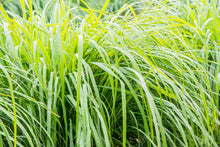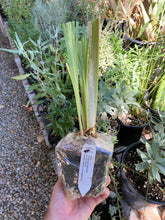Vetiver is a perennial fragrant bunching grass similar to lemongrass, and native to Tamil Nadu in India. This large grass species is grown for several different uses. As an erosion control and animal feed, the long taproots (up to 13 feet) will firmly anchor soils and hillsides in place and can be made into fiber mats and ropes, and the large leaves provide useful forage for livestock and thatch for houses.
Traditionally the roots are used in Aruvedic medicine, and an essence distilled from the roots is used to flavor cold drinks, sherbets, lassis, perfumes and soaps. The fragrance has been compared to mild sandalwood, and because of its excellent fixative properties is included in most men’s colognes in the West.
Vetiver grass can grow to be up to 5 feet tall, and is highly drought resistant. In addition, the underground crown makes it resistant to wildfires, and these plants can be flooded with water for up to two months and still survive. Because of this tenacity, fertile vetiver easily become invasive, and so to avoid this most types grown agriculturally are sterile.
Growth Form: Bunching grass, up to 5’x5’
Light: part-full sun
Water: drought tolerant once established
Soil: well-drained loam
Hardiness: USDA zones 8-10
Perennial




